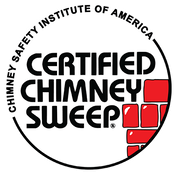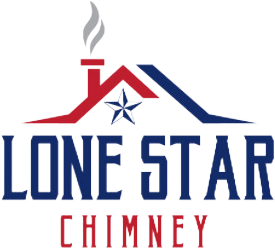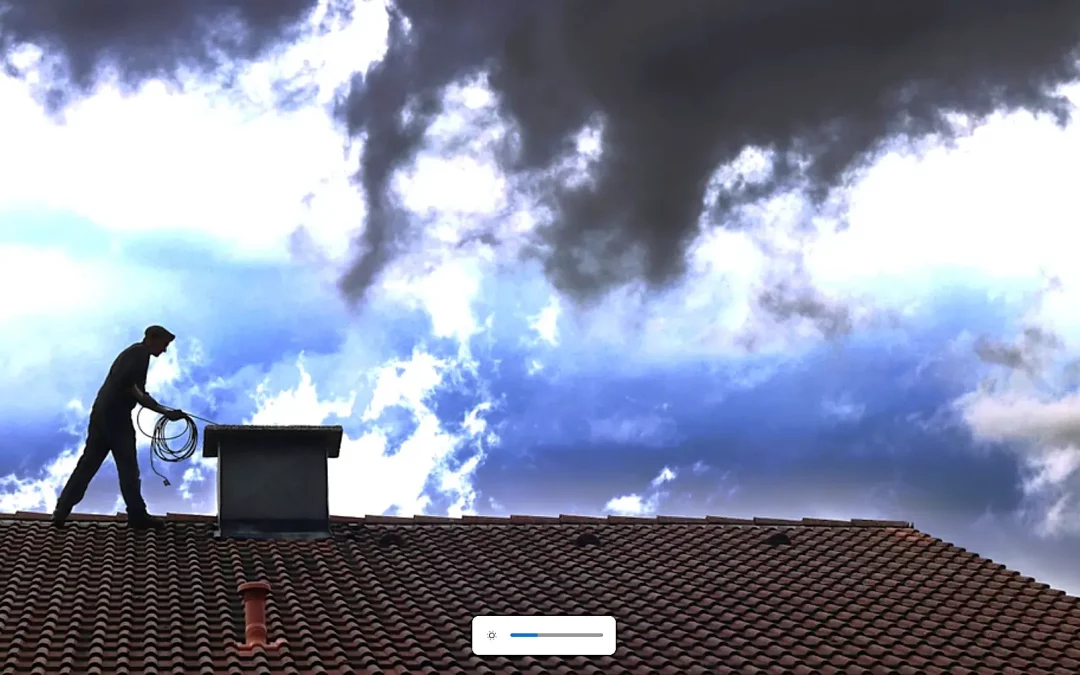Houston homeowners face unique challenges when it comes to maintaining their chimneys. The city’s notorious humidity, frequent rain, and occasional temperature fluctuations can accelerate chimney deterioration if left unchecked. While many homeowners might overlook their chimneys during routine home maintenance, regular inspections and professional chimney sweep services are essential for safety, efficiency, and longevity.
Understanding why chimney maintenance matters in Houston’s specific climate conditions can help homeowners protect their property investment and ensure their fireplace remains a safe, functional feature of their home for years to come.
Why Houston’s Climate Creates Special Chimney Concerns
Houston’s climate presents specific challenges for chimney structures that many homeowners don’t realize until problems arise. With average annual rainfall exceeding 49 inches and humidity levels frequently surpassing 90%, moisture becomes the primary enemy of chimney systems throughout the region.
This persistent moisture creates ideal conditions for several chimney-related issues:
- Accelerated masonry deterioration: When brick and mortar repeatedly absorb moisture and then dry, they begin to crack and crumble faster than in drier climates.
- Rust formation in metal components: Dampers, chimney caps, and flashing are particularly vulnerable to Houston’s humidity.
- Creosote buildup: Humid air can contribute to faster accumulation of creosote, a highly flammable substance.
- Mold and mildew growth: The dark, sometimes damp environment inside neglected chimneys creates perfect conditions for biological growth.
- Wildlife intrusions: Houston’s biodiversity means animals seeking shelter frequently find their way into unprotected chimneys.
What makes these issues particularly concerning is that many develop invisibly inside the chimney structure, only becoming apparent when significant damage has occurred or when safety hazards emerge. This is precisely why regular chimney sweep services and professional inspections are so crucial for Houston homeowners.
Common Chimney Problems Specific to Houston Homes
The combination of humidity, rainfall, and occasional temperature swings creates several predictable issues for Houston chimneys. Being aware of these common problems can help homeowners recognize when it’s time to call a professional chimney sweep.
Water Damage and Leaks
Perhaps the most prevalent chimney issue in Houston is water intrusion. Without proper protection, chimneys effectively become conduits for moisture to enter the home. Signs of water damage include:
- Water stains on walls or ceilings near the chimney
- Damp or musty odors coming from the fireplace
- Visible efflorescence (white mineral deposits) on chimney masonry
- Spalling bricks (when the face of the brick flakes off)
- Rust stains streaming down from chimney components
A professional chimney sweep can identify the source of leaks and recommend appropriate solutions, such as crown repairs, flashing improvements, or waterproofing treatments specific to Houston’s climate conditions.
Creosote Buildup
Creosote—a tar-like, highly flammable substance—forms when wood smoke cools inside the chimney flue. Houston’s humidity can exacerbate this issue, as moisture in the air interacts with smoke particles. Heavy creosote accumulation is a leading cause of chimney fires and requires professional removal.
Third-degree creosote, which has a thick, glazed appearance, is particularly dangerous and difficult to remove. Only experienced chimney sweep professionals have the tools and techniques to safely address severe creosote buildup, which is why regular maintenance is so important for prevention.
Liner Deterioration
The chimney liner—typically made of clay tiles, metal, or cast-in-place materials—protects the house structure from heat and combustion byproducts. In Houston’s humid environment, liner deterioration can accelerate, particularly in older homes. Cracks, gaps, or deterioration in the liner can allow dangerous gases like carbon monoxide to enter living spaces or even lead to house fires.
Wildlife Intrusions
Houston’s diverse wildlife population includes several creatures that view chimneys as ideal nesting locations. Birds, squirrels, raccoons, and bats commonly make their homes in unprotected chimney systems. These unwanted guests can block flues, introduce parasites and diseases, and create fire hazards with their nesting materials.
Professional chimney sweep services include inspection for wildlife evidence and can recommend appropriate chimney cap installations to prevent future intrusions while still allowing proper ventilation.
The Benefits of Regular Chimney Sweep Service
Scheduling regular chimney maintenance with a qualified chimney sweep offers Houston homeowners numerous advantages that extend far beyond simple cleanliness. These benefits directly impact safety, efficiency, air quality, and the longevity of both the chimney system and the home itself.
Enhanced Safety for Your Household
Safety should always be the primary concern when it comes to chimney maintenance. Regular chimney sweep service significantly reduces several serious safety risks:
Fire Prevention: According to the National Fire Protection Association, failure to clean chimneys remains a leading cause of home heating fires. Professional chimney sweep service removes flammable creosote buildup before it reaches dangerous levels. In Houston’s climate, where creosote can form more rapidly due to humidity interactions, this regular cleaning is particularly important.
Carbon Monoxide Protection: A clean, properly functioning chimney effectively vents dangerous gases outside the home. Blockages, liner damage, or improper drafting can allow carbon monoxide—an odorless, colorless gas—to enter living spaces. Regular chimney sweep inspections can identify these potentially lethal issues before they lead to carbon monoxide poisoning.
Structural Integrity Assessment: Professional chimney sweeps evaluate the structural condition of the chimney during cleaning, identifying weakened masonry, damaged crowns, or compromised flashing that could lead to collapse or water damage throughout the home.
Improved Heating Efficiency
Beyond safety considerations, regular chimney maintenance by a professional chimney sweep directly impacts the efficiency of your fireplace or wood stove:
Better Drafting: Clean chimneys create proper airflow, ensuring fires burn hotter and cleaner while effectively drawing smoke upward and out of the home rather than into living spaces.
Reduced Fuel Consumption: When a chimney functions efficiently, less wood or fuel is required to produce the same amount of heat, resulting in cost savings over time.
Optimal Performance: Professional chimney sweep service ensures dampers, smoke chambers, and other components function correctly, maximizing the heating benefit you receive from your fireplace.
Prolonged Chimney Lifespan
Regular maintenance by a qualified chimney sweep significantly extends the useful life of your chimney system. Without this care, Houston homeowners often face expensive repairs or even complete chimney rebuilds within just 15-20 years. With proper maintenance:
Early Problem Detection: Minor issues like small cracks or early-stage water damage can be addressed before they develop into major structural problems.
Preservation of Masonry: Professional chimney sweeps can apply appropriate waterproofing treatments specifically designed for Houston’s climate conditions, protecting the masonry from moisture damage.
Component Longevity: Regular inspection and cleaning reduces stress on metal components like dampers and liners, extending their functional lifespan.
Better Indoor Air Quality
The chimney functions as part of your home’s ventilation system. When maintained by regular chimney sweep service, it contributes to healthier indoor air:
Reduced Smoke Infiltration: A clean, properly functioning chimney effectively draws smoke up and out rather than allowing it to seep into living spaces.
Prevention of Mold Growth: In Houston’s humid environment, neglected chimneys can become breeding grounds for mold and mildew. Regular cleaning and inspection prevents these allergens from developing and spreading throughout the home.
Elimination of Odors: Creosote buildup, animal intrusions, and moisture accumulation can all create unpleasant odors that permeate the home. Professional chimney sweep service addresses these issues, keeping your home smelling fresh.
How Often Should Houston Homeowners Schedule a Chimney Sweep?
For Houston homeowners, determining the right frequency for chimney inspections and cleaning requires considering several factors specific to the local climate and individual usage patterns.
Standard Recommendation for Houston’s Climate
Because of Houston’s unique climate challenges, local chimney professionals typically recommend more frequent attention than the national standard:
- Annual inspection: Every Houston home with a chimney should undergo a professional inspection once per year, regardless of how often the fireplace is used. This allows for early detection of moisture-related issues specific to the region.
- Cleaning schedule based on usage: For cleaning frequency, a general guideline is:
- Light use (1-2 fires per month during winter): Cleaning every other year
- Moderate use (1-2 fires per week during winter): Annual cleaning
- Heavy use (3+ fires per week or daily during winter): Consider mid-season inspection and potentially twice-yearly cleaning
However, these are just general guidelines. A professional chimney sweep can provide recommendations tailored to your specific situation during the annual inspection.
Signs That Indicate You Need a Chimney Sweep Immediately
Regardless of when your last service was performed, certain warning signs indicate the need for immediate attention from a professional chimney sweep:
- Visible creosote: If you can see shiny black deposits or flakes falling into the fireplace, creosote has built up to concerning levels.
- Smoke problems: Smoke that doesn’t draw properly up the chimney but instead enters the room indicates a potential blockage or draft issue.
- Animal sounds: Scratching, chirping, or rustling from within the chimney suggests wildlife has taken up residence.
- Odors: Persistent smoky or musty smells emanating from the fireplace, even when not in use, often indicate creosote buildup or moisture problems.
- Visible damage: Any noticeable cracks, missing mortar, or crumbling bricks require immediate professional assessment.
- Recent severe weather: After Houston’s occasional severe storms, checking for chimney damage is advisable, particularly if high winds or flying debris were involved.
- Water in the fireplace: Visible moisture or water stains inside the firebox indicate a leak that requires immediate attention before serious structural damage occurs.
What to Expect During a Professional Chimney Sweep Service
Many Houston homeowners aren’t familiar with what actually happens during a professional chimney sweep visit. Understanding the process helps set appropriate expectations and ensures you’re receiving comprehensive service.
The Inspection Process
A thorough chimney inspection typically precedes the actual cleaning and includes:
- External evaluation: The chimney sweep examines the exterior chimney structure, looking for signs of deterioration, water damage, or structural concerns specific to Houston’s climate effects.
- Interior fireplace assessment: The firebox, damper, smoke chamber, and visible portions of the flue are examined for creosote buildup, cracks, or other issues.
- Advanced inspection techniques: When warranted, professional chimney sweeps may use specialized equipment like camera systems to examine hidden areas within the flue or structure.
- Moisture testing: Given Houston’s humidity challenges, moisture readings may be taken to detect problems invisible to the naked eye.
- Component functionality check: The chimney sweep tests dampers, doors, and other moving parts to ensure proper operation.
The Cleaning Procedure
After inspection, if cleaning is needed, a professional chimney sweep typically follows these steps:
- Area preparation: Furniture near the fireplace is covered or moved, and drop cloths protect the floor. Professional equipment creates negative pressure to prevent dust and soot from entering the home.
- Creosote removal: Using specialized brushes, rods, and sometimes chemical treatments for glazed creosote, the chimney sweep removes accumulated deposits from the flue.
- Debris cleanup: All loosened material is captured and removed from the chimney system.
- Component cleaning: The damper, smoke shelf, and firebox are thoroughly cleaned.
- Final inspection: After cleaning, a visual check confirms the chimney is clean and functioning properly.
Professional Recommendations
Following the service, a reputable chimney sweep will:
- Provide documentation: You should receive a written report detailing findings, work performed, and recommendations.
- Explain issues: Any problems discovered will be clearly explained, often with photographic evidence.
- Discuss options: If repairs are needed, the chimney sweep should present various approaches and associated costs.
- Offer preventative advice: Based on Houston’s specific climate challenges, you may receive recommendations for protective measures like waterproofing or cap installation.
DIY Maintenance Between Professional Chimney Sweep Visits
While professional chimney sweep service is essential, Houston homeowners can perform simple maintenance between visits to preserve chimney condition in the challenging local climate.
Visual Inspections
Perform regular visual checks:
- After storms, look for obvious exterior damage or displaced chimney caps
- Check for water stains around the fireplace or ceiling near the chimney
- Look for fallen debris or nesting materials in the firebox
- Examine the damper for smooth operation and signs of rust
- Watch for efflorescence (white powdery deposits) on exterior bricks, indicating water penetration
Moisture Control Practices
Given Houston’s humidity, moisture control is particularly important:
- Ensure the chimney cap is intact and properly fitted
- Keep the damper closed when not in use to minimize humidity entry
- Consider a chimney pillow (also called a chimney balloon) for the off-season to block air exchange
- Address any water stains or dampness immediately, as these indicate developing problems
- Maintain gutters and downspouts to prevent water from being directed toward the chimney structure
Proper Fireplace Use
How you use your fireplace affects chimney condition:
- Burn only properly seasoned hardwoods, which produce less creosote
- Avoid burning treated wood, pine, or household trash, which create excessive deposits and potentially toxic emissions
- Maintain proper airflow by opening dampers fully during fires
- Allow for complete combustion rather than smoldering fires, which produce more creosote
- Remove ashes regularly, but leave about an inch during the burning season as insulation
When to Call a Professional Chimney Sweep
Despite diligent DIY maintenance, certain situations require immediate professional attention:
- Detection of any cracks in the chimney structure
- Signs of water intrusion or leaks
- Animal noises or evidence of nesting
- Smoke entering the home rather than going up the chimney
- Soot accumulation occurring more rapidly than usual
- Unpleasant odors emanating from the fireplace
Selecting a Qualified Chimney Sweep in Houston
With Houston’s specific climate challenges, choosing the right chimney sweep is particularly important. Not all service providers have experience with the unique problems caused by the region’s humidity and weather patterns.
Essential Qualifications to Look For
When researching chimney sweep services in Houston, prioritize these credentials:
Certification: Look for technicians certified by the Chimney Safety Institute of America (CSIA) or National Chimney Sweep Guild. These certifications ensure the chimney sweep has undergone proper training and testing.
Local Experience: Providers with specific experience in Houston understand the unique challenges posed by the local climate and common issues in area homes.
Insurance Coverage: Verify the chimney sweep carries liability insurance and workers’ compensation coverage to protect your property and themselves.
Business Longevity: Companies established in the Houston area for several years typically have proven track records and stability.
Continuing Education: The best chimney sweeps participate in ongoing training to stay current with industry developments and techniques.
Questions to Ask Before Hiring
Before scheduling service, ask potential chimney sweep providers:
- “What specific techniques do you use to address Houston’s humidity-related chimney issues?”
- “How do you protect my home from soot and debris during cleaning?”
- “Will you provide a written inspection report and detailed recommendations?”
- “What camera or inspection equipment do you use to examine the flue?”
- “Do you offer waterproofing services designed for Houston’s climate?”
- “Can you provide local references from similar homes in my area?”
- “What is your approach to addressing creosote buildup?”
Warning Signs of Unqualified Providers
Be cautious of chimney sweep services that:
- Offer significantly lower prices than other local providers (quality service requires proper equipment and time)
- Cannot provide proof of insurance or certification upon request
- Use high-pressure sales tactics or create urgency about expensive repairs
- Arrive unexpectedly offering “special deals” or claiming they “were in the neighborhood”
- Provide quotes without thorough inspection
- Use generic approaches rather than solutions tailored to Houston’s climate challenges
- Lack a physical business address or established local presence
Seasonal Considerations for Houston Chimney Maintenance
Houston’s seasonal patterns offer specific windows of opportunity for optimal chimney care and maintenance. Understanding these timing considerations helps homeowners schedule chimney sweep services most effectively.
Ideal Timing for Chimney Sweep Service
The best times to schedule chimney maintenance in Houston are:
Late spring (April-May): After the heating season ends but before summer humidity peaks, this period allows chimney sweeps to address any winter damage before moisture can exacerbate problems. The chimney can then dry thoroughly during cleaning.
Early fall (September-October): Before the heating season begins, this timing ensures your system is clean and safe before first use. It’s ideal for identifying any summer damage from storms or wildlife activity.
Avoiding summer scheduling when possible: Houston’s most intense humidity occurs during summer months, making it challenging to thoroughly dry chimney systems after cleaning. Additionally, summer storms may create new issues shortly after service.
Seasonal Chimney Protection Measures
Adjust your chimney care throughout Houston’s seasonal changes:
Spring preparations: Have the chimney sweep check for winter damage and apply waterproofing treatments before summer rains.
Summer vigilance: Check for storm damage after severe weather and monitor for signs of wildlife intrusion, which peaks during summer months.
Fall readiness: Schedule pre-season chimney sweep service and ensure caps and covers are secure before beginning winter use.
Winter usage period: Follow proper burning practices during Houston’s mild winter and monitor for any signs of improper function.
Read more:


